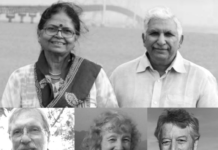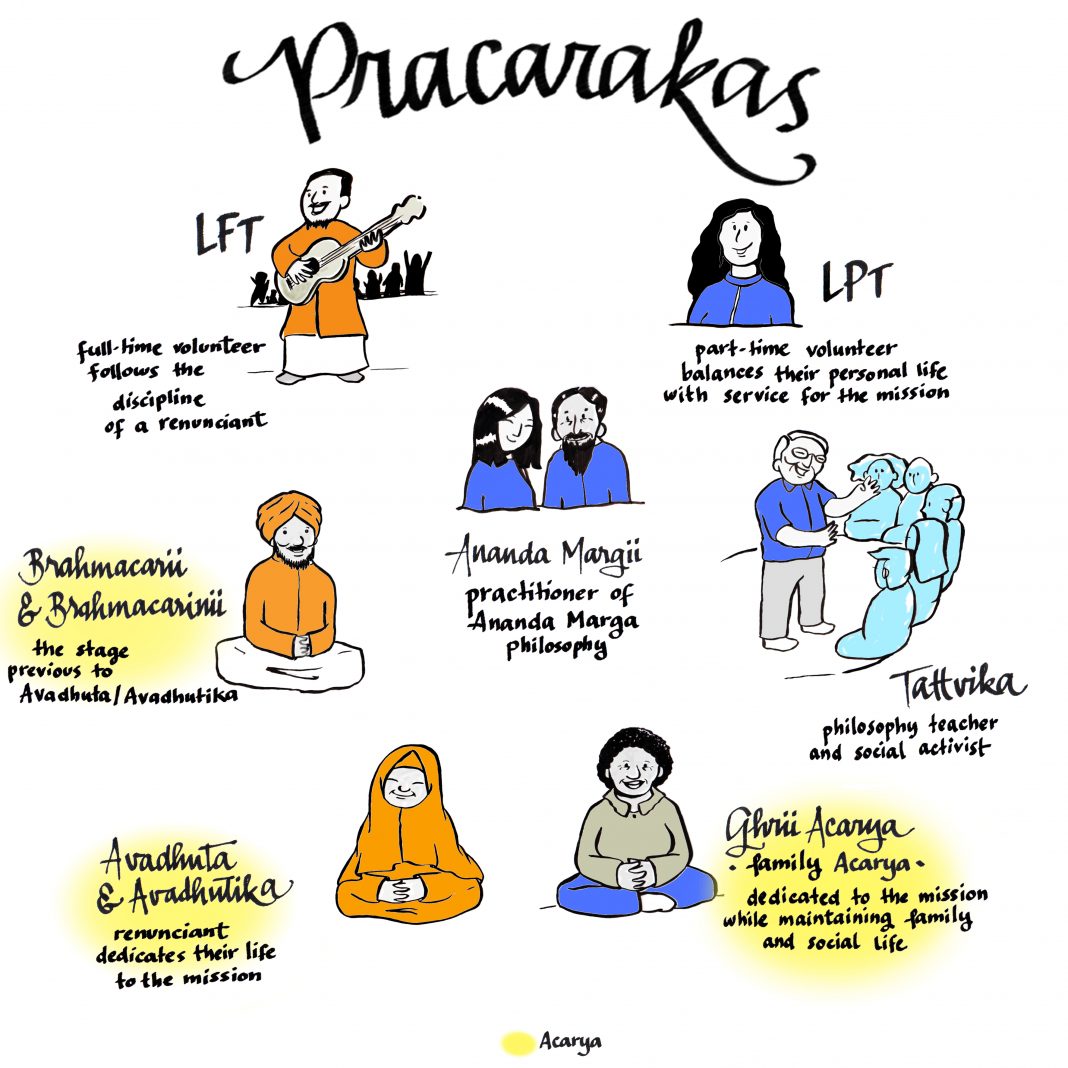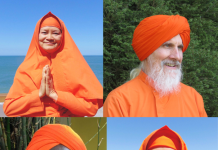Dharma is a central point of the philosophy of Shri Shri Anandamurti. It is, according to him, the intrinsic nature of all objects, animate or inanimate. In the case of human beings, their nature is to move toward the Cosmic Entity.
Dharma pracar is the transformation of this deep desire of each being, of each spiritual aspirant (who fights inwardly and outwardly to establish himself in dharma) into concrete actions in society, actions that inspire other beings and spread the spiritual ideology.
People who perform dharma pracar are known as pracarakas and can act in different roles, so that others can enter the virtuous cycle of bliss, self-realization and service to humanity. In the first part of this series, we will learn the main aspects of each of these roles.
Ananda Margii: Every practitioner of the ideology of Ananda Marga who propagates that ideology through his personal example and his social actions. In this way, they inspire others to want to spiritually elevate themselves, whether by practicing meditation, yoga, adopting a subtle diet, or through other aspects of the ideology.
“Practicing what Baba left us transforms us from the inside out, and the glow emanating from such sadhakas can be perceived by anyone. This glow is pracar.”
(Krsna – Paulo Dias – Araruama, RJ – Brazil)
LPT – local part-timer: perform volunteer work, balancing their time between their personal life and supporting the development of the mission.
The following roles can be performed only after appropriate training and examination:
LFT – local fulltimer: an initial experience as a renunciate; works full time outside his own city with an acarya.
“To become an LFT is to be encouraged to take one step further in the quest to submerge oneself with a sense of surrender in a totally spiritual environment.”
(Viveka – Francisco Irigoyen – Araruama, RJ – Brazil)
Tattvika: family person who inspires by his ethical conduct. Their tasks are directed toward collective development and have two main focuses: intellectual (teaching the various aspects of the Ananda Marga philosophy) and practical (helping during natural disasters, for women’s welfare, and socioeconomic reform). You can also teach basic meditation.
“To be a tattvika is to build our mission so that we can really bring Ananda Marga into the public arena and help people understand this incredible ideology.”
(Liila Hass – Australia)
Acarya: those who teach by their own conduct. A fundamentally ethical leadership, because they place service to society above their personal lives. At the same time, they transmit the spiritual ideology and guide others, fostering the elevation of each each and all beings. They teach the complete meditation, that is, all the steps necessary for the liberation of human beings. There are two types of acaryas:
(a) Sannyasi (monk/nun, WT – Wholetimer): renounces their personal, social and family life in order to dedicate themselves full-time to the mission. They pursue their work in countries far from their place of origin. In the first phase of their training they receive the name of brahmacarii/brahmacarinii (men/women) and they wear white and orange. After a few years of dedication, they receive a special lesson (kapalika) and begin to wear the full uniform orange. From then on, they are called avadhuta/avadhutika (men/women) and are committed to working for mission and ideology until the last being becomes enlightened.
“It’s all about surrender, feeling totally surrendered. In every moment you exist for Him” (Acarya Siddheshvarananda Avadhuta)
(b) Grhii acarya (family acarya): fully dedicated to spiritual ideology, while at the same time maintaining a family and a professional life.
“The vow of the family acarya is to serve all acaryas and margiis (…) their commitment is always to everyone and is not related to any group, anywhere or at any time.”
(Grhii acarya Vishvamitra – Sid Jordan – Ananda Girisuta – United States)
In the next parts of this series you will be able to learn more about each of these different pracar roles through more details and testimonials.
Infographic by Liss Thane






